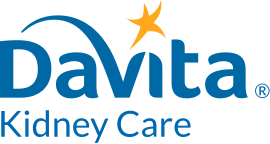Cooking alternatives bring variety to meals for people following a kidney diet. One different method of cooking to try is broiling. Food that is broiled is exposed directly to a heating source from above the food— often an open flame. It is sometimes referred to as a dry-heat cooking method since the cooking is done without the use of any water. Broiling requires continuous high heat, so instead of adjusting the temperature, the food is moved closer or farther from the heat to change cooking time and degree of doneness.
Best kidney-friendly foods to broil
Since broiling uses rapid, high heat, it works best for cooking tender red meats, poultry, fish and some vegetables. Each food has unique characteristics to consider when broiling for your kidney diet.
Red meats
Broiled red meat forms a brown crust outside that adds extra flavor, while the inside stays tender and juicy. Cooking time depends on how thick the meat is and how rare or done you want the meat. Broiling works best for cuts of meat 1-2 inches thick.
Here are a few tips that will help you perfect the broiling method when preparing your next kidney-friendly meat recipe:
- Always preheat the broiler.
- Use tongs to turn the meat instead of piercing with a fork, which lets the juices escape, resulting in dry meat.
- Brush meat with oil to prevent sticking and retain moisture.
- To season broiled meats, marinate before cooking or add low sodium seasoning or sauce after cooking.
- Use butter, oil or fresh marinade to baste meat during broiling. To prevent contamination, never use leftover marinade from the meat. Instead set aside some of the marinade for basting before adding it to the meat.
- Turn meat only one time during broiling.
- If your recipe includes added glaze or sauce during broiling, wait until the meat is almost cooked before adding it. Otherwise the glaze may burn before the meat is cooked.
Poultry
Turkey cutlets, Cornish hens, chicken breasts, legs or thighs, or even a halved chicken will turn out juicy and tender when broiled. Follow these tips to make broiled poultry that will become a family favorite even on the kidney diet:
- Season poultry with a low sodium herb and spice rub, or marinate in a combination of herbs and oil plus lemon juice, pineapple juice or vinegar. Remember to set aside some marinade for basting before adding the raw poultry.
- Leave the skin on poultry to add flavor and moisture. Remove it before eating if you are concerned about the extra fat.
- Start broiling with the skin side down to help keep in flavor and juices. After you turn the pieces, the skin on top will brown nicely.
- Use a lower temperature by moving the pan farther from the heat when broiling poultry so the inside gets done enough without burning the skin or outside. Check inside temperature of the meat when you think it is close to being done. Aim for 170 degrees Fahrenheit.
- Broil extra chicken for a quick leftover meal, sandwich or salad the next day.
Fish and seafood
Broiling is a great cooking method to prepare fish or seafood and keep the dish healthy. Cod, flounder, halibut, whitefish, catfish, salmon, tuna steaks and shrimp are good choices for your kidney diet. Fish requires more attention than broiled meat or chicken because it cooks quickly. For perfectly broiled fish or seafood follow these easy tips:
- Keep the broiled fish simple and complement it with a low sodium sauce such as salsa or relish. Try Lemon Caper Sauce, Cucumber Dill Salsa or Mango Chutney from DaVita.com/Recipes.
- Check broiled fish frequently to prevent overcooking.
- To maintain moisture, coat fish with oil before broiling.
- If using a flour coating, cover fish with flour then dip in butter or oil.
- If using a corn meal or bread crumb coating, dip fish in oil or butter then dredge in the coating. Watch closely because the breadcrumbs burn easily.
- Turn thick cuts once during broiling. For thin fillets, place in an oiled or buttered pan and cook on one side only.
- Brush shrimp with marinade or butter several times during broiling.
- Broil fish or seafood just before serving the meal so it is hot and appetizing.
Vegetables
Vegetables that work well on the grill are also good choices for broiling. The high heat from broiling adds color and flavor to vegetables. Try broiling lower potassium kidney-friendly vegetables such as asparagus, eggplant, mushrooms, onions, peppers, yellow summer squash and zucchini.
- Brush vegetables with oil or marinade to enhance browning.
- Use skewers to make vegetable kabobs; rest skewers on the rim of a shallow pan or on a rack in a broiler pan.
- Broil vegetables 4 to 5 inches from the heat for best results.
- Turn vegetables once or twice during cooking.
Broiling may be used to heat or brown some foods such as broiled fruits or toppings on casseroles or desserts. Some foods cooked by baking or on the stove top may be broiled during the last few minutes to add crispness or color.
People with chronic kidney disease (CKD) can broil many foods, ranging from breakfast and dinner to a kidney-friendly lunch or appetizer. So what are the other benefits to broiling foods on the kidney diet?
Benefits to broiling kidney-friendly foods
There are several benefits to broiling when compared to other cooking methods, such as frying, sautéing or baking on the kidney or dialysis diet. First, broiling foods can be quicker than other cooking techniques. Because high temperatures are utilized, food often cooks in a matter of minutes. Second, when you broil, you are not cooking the food in its own fat and grease. This will help reduce some of the fat content and may be a healthier option. By broiling fresh meats instead of preparing processed meats, you are making a healthier choice for your kidney diet. Processed meats can be high in sodium and phosphorus, which aren’t good for people with kidney disease. When you go grocery shopping, choose lean cuts of fresh meat, chicken or fish for broiling. This will give you the high-quality protein that is necessary on a CKD non-dialysis diet or dialysis diet.
Broiling versus grilling (barbecuing) on the kidney diet
Grilling (barbecuing) is just as kidney-friendly as broiling, but can be less convenient because a grill takes longer to heat than an oven and has to be used outdoors. Usually turning your oven on is quicker than lighting a charcoal grill. It takes less time for an oven to reach a broiling temperature than it does for charcoal to get hot. Gas grills may heat up fast, but if the weather isn’t cooperating for grilling outside, it is good to have a broiler available for cooking kidney-friendly foods inside.
Although broiling and grilling use dry heat to cook food, there is another difference. The heating source for grilling or barbecuing is below the food; the broiling heating source is above the food.
Kitchen tools for broiling on the kidney diet
In order to broil a kidney-friendly dish, you will need an oven or toaster oven, and a broiling pan or a shallow pan.
Most ovens and toaster ovens have a broil setting. Note that since ovens usually shut off when they reach a certain temperature (often 500-550 degrees Fahrenheit), typically the oven door is left slightly open when you broil to help keep the temperature just below the shutoff level.
A broiling pan consists of two parts. There is the grill portion, which is usually flat and has cut slots or openings, small enough so your food doesn’t fall through. The second part is the pan, which sits just below the grill and catches the fat or grease from the food you are broiling, allowing it to be a healthier kidney diet cooking alternative.
You can also use a spit or metal skewers to broil foods. A spit is a metal prong cooking device that is used for rotisserie meats.
Kidney-friendly recipes that require broiling
Davita.com has a list of several recipes that call for broiling. If you haven’t started broiling kidney-friendly recipes yet, you may want to try the following broiled meals that are ideal for the kidney diet.
Breakfast
Lunch
Appetizers
Dinner
Dessert
Summary
If you have chronic kidney disease or you are on dialysis, you may more than likely be on some type of a kidney diet. Broiling on the kidney diet offers many advantages over other ways of cooking. Broiling can reduce the amount of fat in your diet while still providing the high-quality protein your body needs. Work with your renal dietitian to learn more about broiling foods on the kidney diet.


